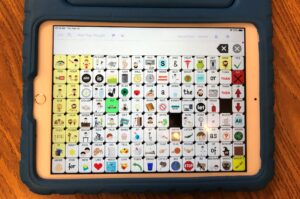Augmentative & Alternative Communication
(AAC)
Augmentative and alternative communication (AAC) is the term for all the ways we communicate without talking. Augmentative communication is a style of communication that you use when you have the ability to speak but need help to make your message clearer. Alternative communication is used when you are unable to be understood or speak. If you have a condition that causes you to have difficulty expressing yourself then augmentative and alternative communication (AAC) may be a solution. Some AAC users benefit from some form of assistive technology like a speech generating device. However, there are other methods like a manual board with pictures/symbols/letters to make your message heard.
Those who benefit include those with:
- Strokes
- Autism
- Cerebral palsy
- Head injury
- Genetic syndromes
- Hearing impairment
There are two modes of AAC communication
Unaided
- Sign Language
- Gestures
- Facial expressions
- Body language
Aided
- Communication boards/books
- Computers that give synthetic speech
- Hand held devices with speech generation
- Choice cards



Typically, a combination of aided and unaided devices/techniques are utilized by AAC users to communicate their message. To avoid wasted time and money, a team of specialists (speech/language, technology specialist, etc.) should assess your needs as a critical first step. They can guide you to putting together the right pieces so you can be heard.
Paying for AAC devices:
- Grants
- Self-pay (out of picket)
- Local school district after an assistive technology evaluation
- Rental agreements
- Health Insurance
